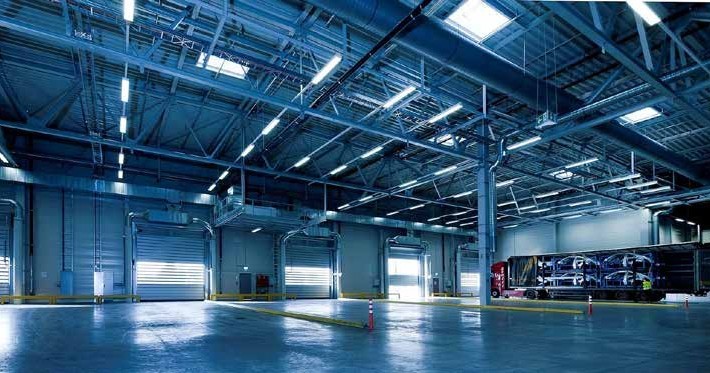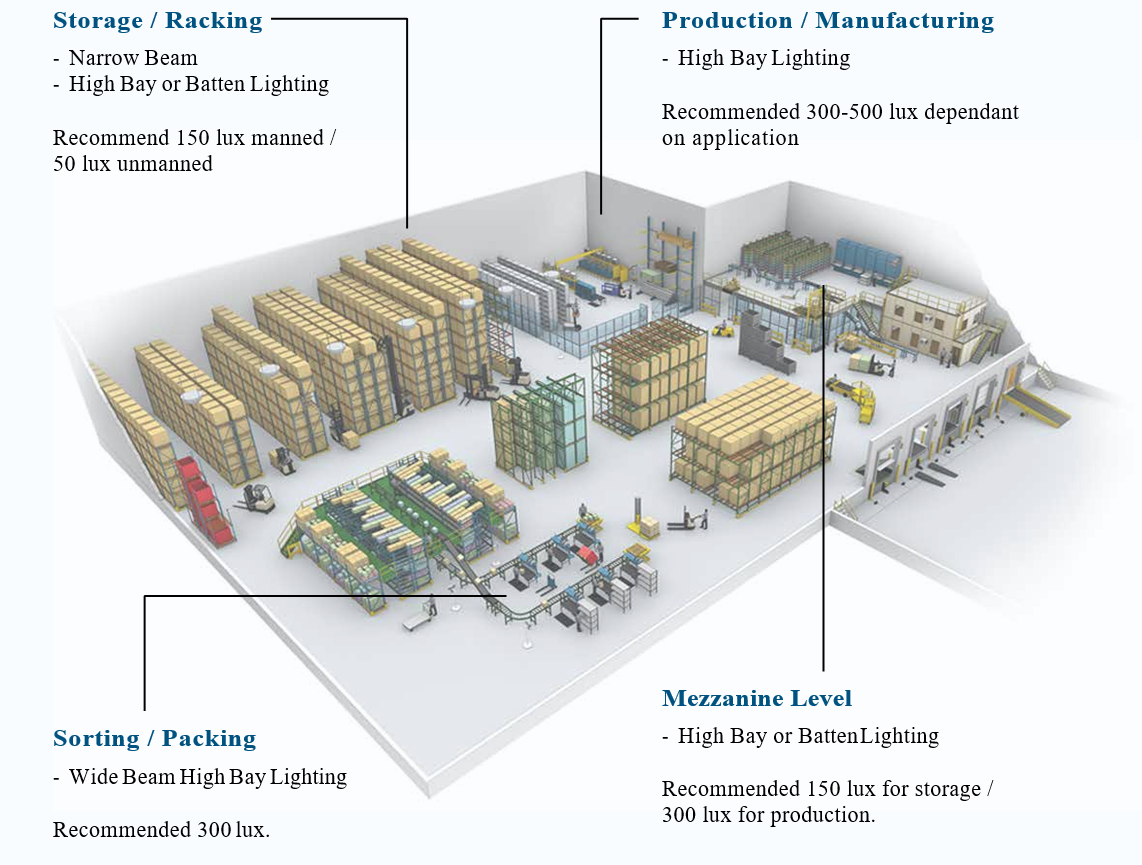
Image Source: joloda.com/news/best-practices-for-warehouse-loading-dock-design/
INDUSTRIAL LIGHTING: HOW TO LIGHT A WAREHOUSE
While choosing the correct lighting for your warehouse is key, it’s not rocket science.
Recommended Lighting Levels
For warehouses, the recommended lux levels for manned storage areas, according to CIBSE / The Society of Light and Lighting, are a minimum of 150 lux at floor level and ideally 200 lux at the face of any racking.
Correct Lighting Type
There are a fair amount of considerations to be made when choosing the correct type of lighting. The lighting plane, height of any racking, the spacing of any racking, ambient lighting and general usage of the area.
How Much Area Does One Cover?
The area covered by one lighting fixture is generally determined by the mounting height of the fixture and the number of lumens. Supposing the mounting height is 20 feet, the spacing is about 20 feet. For 40 feet, the next fixture should be 40 feet apart. For warehouses handling large items, the ideal lumen requirement tend to be around 10 lumens per square feet. For warehouses storing and handling smaller items, the number shoots to around 30 lumens per square feet and for aisles, something in-between is recommended. To calculate the lumen requirements for an area, a simple method is used.
Lumens= lux x (square meters) Lumens=50 × (250)
=12, 500 lumens.
LIGHTING CHOICE & PLACEMENT

The above interactive illustration is by no means comprehensive; there are multiple factors to consider to ensure the lighting is adequate for the space’s use. Primarily it’s important to ensure its users are comfortable and are able to properly fulfill their tasks to their fullest ability and lighting can have a major impact. Keeping lighting to recommended levels also keeps you well protected when it comes to issues such as accidents as insurers will want to ensure that lighting levels were adequate for the jobs being performed it goes without saying that neglected lighting in a poor state of repair or simply not fit for purpose can be classed as negligence.
